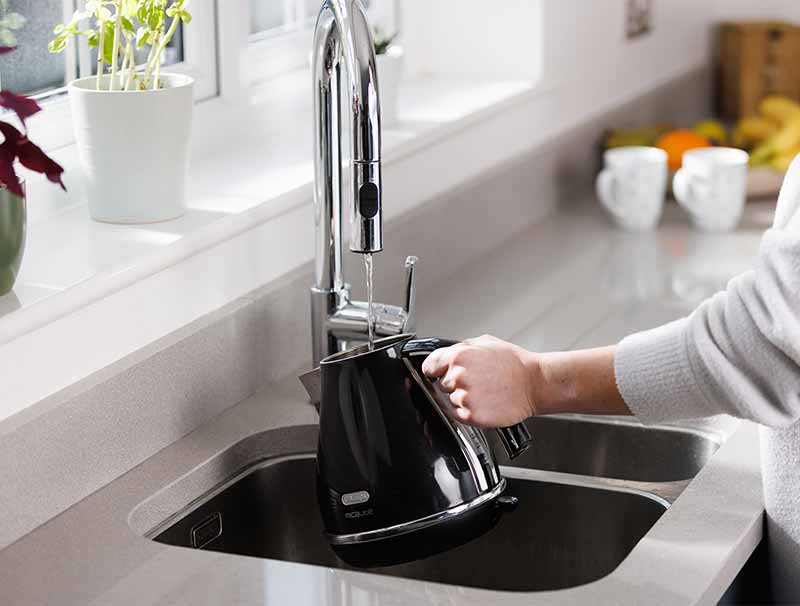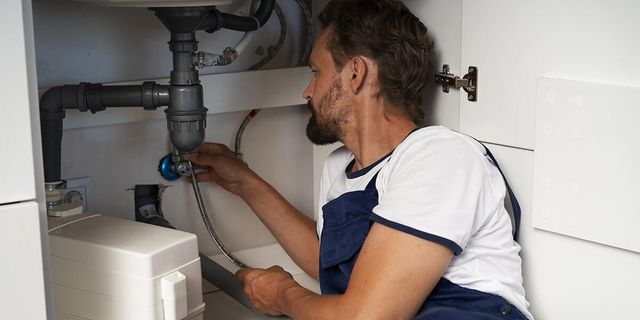Have you been interested in help around Low Water Pressure in the House??

Low tide pressure in your house can be a frustrating issue, affecting every little thing from showering to cleaning recipes. If you're experiencing weak water circulation, there are several possible causes and services to discover. In this overview, we'll review usual reasons for low water stress and sensible actions to address the issue successfully.
Introduction to Low Tide Pressure
Low tide pressure happens when the circulation of water from your faucets, showers, and various other components is weak than normal. This can make everyday jobs more challenging and much less effective. Recognizing the sources of low water stress is essential to finding the appropriate solution.
Typical Reasons For Low Water Pressure
Pipe Obstructions
In time, pipes can come to be blocked with mineral deposits, debris, or particles, restricting the circulation of water. This is a typical problem in older homes with galvanized steel pipes.
Rust
Corrosion within pipelines can result in leakages and decreased water stress. Rust build-up can restrict water circulation, especially in maturing plumbing systems.
Faulty Stress Regulators
Stress regulators are accountable for maintaining constant water stress in your home. If they malfunction, it can lead to low tide stress or uneven flow throughout your home.
Local Water Supply Issues
In some cases, the trouble exists outside your home. Municipal water system concerns, such as main line leakages or maintenance job, can briefly decrease water pressure in your area.
How to Detect Low Tide Pressure
Inspecting Faucets and Fixtures
Beginning by testing the water stress at different taps and fixtures throughout your home. If the concern is isolated to specific areas, it might indicate local problems.
Examining Pipelines
Check noticeable pipelines for signs of leaks, corrosion, or clogs. Pay attention to any kind of unusual audios, such as banging or rattling pipelines, which could suggest issues within the plumbing system.
Consulting with a Plumber
If you're not able to determine the root cause of low tide pressure, take into consideration hiring an expert plumber to perform an extensive examination. They can identify underlying problems and suggest ideal solutions.
DIY Solutions to Repair Low Water Stress
Cleansing Aerators and Showerheads
Natural resources can accumulate in aerators and showerheads, reducing water flow. Get rid of and clean these elements regularly to boost water stress.
Flushing Water Heater
Sediment buildup in the hot water heater can restrict circulation and minimize effectiveness. Purging the container occasionally assists remove sediment and keep optimal efficiency.
Inspecting Stress Regulator
Ensure that the pressure regulatory authority is functioning appropriately. Readjusting or replacing the regulatory authority can help recover proper water pressure throughout your home.
Clearing Up Clogs in Piping
For minor clogs, attempt making use of a plumbing snake or chemical drainpipe cleaner to clear blockages in pipes. Be cautious when using chemicals and adhere to safety and security standards.
When to Call an Expert Plumber
If DIY efforts stop working to solve the issue or if you presume considerable plumbing troubles, it's best to seek aid from an accredited plumber. They have the know-how and tools to attend to complicated problems safely and successfully.
Safety Nets to Keep Water Pressure
Normal Upkeep
Schedule routine maintenance for your plumbing system to stop problems such as corrosion, leakages, and obstructions. Attending to minor problems early can aid avoid even more substantial repair work later.
Mounting a Pressure Booster
Consider mounting a pressure booster pump to improve water stress in locations with continually reduced flow. This can be specifically advantageous for multi-story homes or residential or commercial properties with high-demand fixtures.
Monitoring Water Usage
Bear in mind water usage practices and prevent ill-using the plumbing system. Basic adjustments, such as astonishing showers and laundry tons, can assist keep sufficient water pressure.
Final thought
Dealing with low water pressure can be frustrating, but determining the underlying reasons and executing suitable solutions can restore ideal flow throughout your home. Whether it's cleaning aerators, inspecting pipelines, or seeking advice from a plumber, taking proactive steps can guarantee a stable supply of water for your day-to-day requirements.
FOUR WAYS TO FIX LOW WATER PRESSURE NOW
Turning on a shower or faucet only to find the water comes out in a sad, slow drizzle is never a good feeling. How exactly are you supposed to wash a pan or take a quick shower when it takes 10 minutes just to rinse off a little soap? The good news is that when your water pressure is bad, there's always a cause: typically one that can be easily fixed. Here are some of the most common causes of low pressure and what you can do to fix the issue:
DEBRIS AND MINERAL DEPOSIT BUILDUPS
If you notice low water pressure from just one or two of the fixtures in your house, the problem likely has to do with debris buildup. Water is full of minerals and other debris, all of which can accumulate in your pipes and on your fixtures. This can cause a blockage that affects how much water flows through. To fix this, try filling a small plastic bag with white vinegar, and use a rubber band to hang it around your showerhead or faucet. Let the head of the fixture soak for a few hours, and the vinegar should loosen the deposits.
WATER LEAKS
Leaks are another common cause of low water pressure. If water is flowing out of your plumbing through a hole or crack before it can reach your fixture, the pressure coming out of the faucet or showerhead will be lower. A plumbing professional is your best bet for finding and repairing a leak in your water supply pipes.
Leaks are another common cause of low water pressure. If water is flowing out of your plumbing through a hole or crack before it can reach your fixture, the pressure coming out of the faucet or showerhead will be lower. A plumbing professional is your best bet for finding and repairing a leak in your water supply pipes.
FOUR WAYS TO FIX LOW WATER PRESSURE NOW
Turning on a shower or faucet only to find the water comes out in a sad, slow drizzle is never a good feeling. How exactly are you supposed to wash a pan or take a quick shower when it takes 10 minutes just to rinse off a little soap? The good news is that when your water pressure is bad, there's always a cause: typically one that can be easily fixed. Here are some of the most common causes of low pressure and what you can do to fix the issue:
DEBRIS AND MINERAL DEPOSIT BUILDUPS
If you notice low water pressure from just one or two of the fixtures in your house, the problem likely has to do with debris buildup. Water is full of minerals and other debris, all of which can accumulate in your pipes and on your fixtures. This can cause a blockage that affects how much water flows through. To fix this, try filling a small plastic bag with white vinegar, and use a rubber band to hang it around your showerhead or faucet. Let the head of the fixture soak for a few hours, and the vinegar should loosen the deposits.
WATER LEAKS
Leaks are another common cause of low water pressure. If water is flowing out of your plumbing through a hole or crack before it can reach your fixture, the pressure coming out of the faucet or showerhead will be lower. A plumbing professional is your best bet for finding and repairing a leak in your water supply pipes.
Leaks are another common cause of low water pressure. If water is flowing out of your plumbing through a hole or crack before it can reach your fixture, the pressure coming out of the faucet or showerhead will be lower. A plumbing professional is your best bet for finding and repairing a leak in your water supply pipes.
A VALVE ISSUE
If you have low water pressure throughout your home, check your main shut-off valve to make sure it's completely open. You may also want to see if there's a pressure-reducing valve installed. If there is, have a plumber help you adjust the settings to get the pressure you're looking for.
OTHERS USING WATER
Believe it or not, your low water pressure could be caused by your neighbors. If you notice low pressure at certain times of day, it may be because you and the people living next to you have similar schedules - when everyone is showering at the same time, the pressure will be lower in every home. Low pressure throughout the neighborhood may also be caused by an issue with your municipal water supply. If that's the case, call the supplier to see if they're working on the issue.
https://www.rotorooter.com/blog/water-leaking/low-water-pressure-fixes/

I found that article on when doing a lookup on the web. Do you know somebody else who is truly interested in the niche? Do not hesitate to share it. We recognize the value of your readership.
Call Today